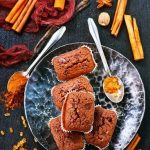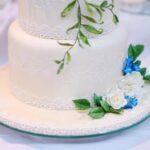Are you looking to add a touch of elegance to your cakes? One of the best ways to do so is by learning how to make cake decorations with royal icing. Royal icing is a versatile and classic choice for creating beautiful and intricate designs on cakes, making it a favorite among bakers and decorators.
Royal icing is a type of icing made from confectioners’ sugar, water, and meringue powder, which dries to a hard, glossy finish. It’s known for its ability to hold intricate shapes and designs, making it the perfect medium for creating stunning cake decorations. This type of icing is also great for adding texture and dimension to cakes, as well as providing a smooth canvas for painting or airbrushing.
In this article, we will explore everything you need to know about working with royal icing, from the tools and ingredients required to the step-by-step process of preparing the perfect royal icing for cake decorations. We will also delve into different piping techniques for creating various designs and shapes on cakes, as well as tips and tricks for successfully decorating cakes with royal icing.
Whether you’re a beginner or an experienced baker, this comprehensive guide will help you master the art of using royal icing for cake decorations.
Tools and Ingredients
Royal icing is a versatile and popular choice for cake decorations, known for its smooth finish and ability to hold intricate designs. To work with royal icing effectively, there are specific tools and ingredients that are essential for achieving professional-looking results.
When it comes to tools, a piping bag with various tips is a must-have for creating different designs on cakes. Additionally, a scribe tool can be used to manipulate the royal icing for precise details and corrections. Other helpful tools include a turntable for smooth and even application of the icing, as well as parchment paper or silicone mats for practicing and creating intricate designs.
In terms of ingredients, royal icing typically consists of powdered sugar, meringue powder, and water. Some decorators also use corn syrup or glycerin to improve the consistency and drying time of the icing. Gel food coloring is preferred over liquid coloring, as it does not alter the consistency of the royal icing. It’s important to note that using fresh egg whites in royal icing is not recommended due to food safety concerns.
Overall, having the right tools and ingredients is essential for successful cake decorating with royal icing. By ensuring that you have everything you need before you start working with royal icing, you will be better prepared to create stunning designs on your cakes.
| Tools | Ingredients |
|---|---|
| Piping bag with tips | Powdered sugar |
| Scribe tool | Meringue powder |
| Turntable | Water |
Preparing the Royal Icing
Royal icing is a versatile and popular choice for cake decorations due to its smooth texture and ability to dry hard, making it perfect for creating intricate designs and shapes. Making the perfect royal icing involves careful measurements and mixing techniques to achieve the ideal consistency for decorating cakes. Here is a step-by-step guide on how to make the perfect royal icing for cake decorations.
Ingredients
To make the perfect royal icing, you will need just a few simple ingredients: confectioners’ sugar, meringue powder or egg whites, and water. Confectioners’ sugar provides sweetness and structure, while meringue powder or egg whites act as the stabilizer to give the icing its smooth, glossy finish.
Mixing
Begin by sifting the confectioners’ sugar into a large mixing bowl to remove any lumps. Gradually add meringue powder or egg whites while mixing at low speed until combined. Then, increase the speed to medium-high and continue mixing for 5-7 minutes until stiff peaks form. Be mindful not to overmix the royal icing, as this can introduce air bubbles that may affect your decorating results.
Consistency Testing
The ideal consistency of royal icing for decorating cakes is achieved when a small amount of icing dropped back into the bowl remains on the surface for several seconds before disappearing. If it disappears too quickly, it’s too thin; if it doesn’t disappear at all, it’s too thick. Adjust the consistency by adding small amounts of water to thin out or more confectioners’ sugar to thicken as needed.
By following these steps and paying attention to detail in your measurements and mixing techniques, you can create the perfect royal icing for decorating cakes with professional-looking designs and decorations.
Piping Techniques
Piping with royal icing is a versatile and artistic way to decorate cakes, cookies, and other baked goods. There are various piping techniques that can be used to create different designs and shapes, adding a personalized touch to your confections. The key to successful piping with royal icing lies in the consistency of the icing, as well as mastering the proper pressure and movement of the piping bag.
One of the most basic yet essential piping techniques is outlining. This involves creating a border or outline of the design before filling it in with additional icing. It helps to define the shape and prevent the icing from spreading outwards. Another popular technique is flooding, which is used to fill in larger areas within the outlined design. This creates a smooth and even surface for decorating intricate details on top.
For more intricate designs, such as lattices, flowers, or lettering, practicing freehand piping is crucial. This technique requires a steady hand and precise movements to achieve clean lines and delicate shapes. It allows for creative freedom and endless possibilities when it comes to cake decorating.
In addition to these traditional techniques, there are also modern methods such as using stencils or templates for more complex patterns. These tools can help achieve uniformity and precision in your designs, especially for repetitive motifs or detailed images. Experimenting with different piping tips – such as round tips for fine lines or star tips for textured embellishments – can also expand your repertoire of piping techniques for royal icing decorations.
| Piping Technique | Description |
|---|---|
| Outlining | Create borders or outlines of the design before filling them in. |
| Flooding | Fill in larger areas within an outlined design to create a smooth surface. |
| Freehand Piping | Create intricate designs like lattices, flowers, or lettering with steady hand movements. |
| Stencil/Template Use | Utilize stencils or templates for complex patterns to achieve uniformity. |
Decorating With Royal Icing
Royal icing is a versatile and popular choice for cake decorations due to its smooth finish and ability to hold intricate designs. When decorating with royal icing, it’s important to keep a few key tips and tricks in mind to achieve clean lines and stunning designs on your cakes.
Tip 1: Consistency Is Key
One of the most crucial aspects of successfully decorating with royal icing is achieving the right consistency. For outlining and creating intricate details, a thicker consistency is needed, while a slightly thinner consistency is ideal for filling in the designs. To achieve the perfect consistencies, it’s important to add water or powdered sugar gradually until the desired texture is reached.
Tip 2: Practice Piping Techniques
Before diving into decorating a cake with royal icing, it’s beneficial to practice different piping techniques on a flat surface. This will allow you to become comfortable with the pressure needed for piping and familiarize yourself with creating various shapes and designs. Practicing on parchment paper or a silicone mat can also help you perfect your technique before applying it to a cake.
Tip 3: Work Quickly and Precisely
Once your royal icing is ready and you’ve practiced your piping techniques, it’s essential to work quickly yet precisely when decorating a cake. Royal icing has a tendency to dry out relatively fast, so being efficient in your design application is crucial. Additionally, using toothpicks or small spatulas can aid in achieving intricate details and cleaning up any imperfections while the icing is still wet.
By keeping these tips in mind, you can successfully decorate cakes with royal icing, achieving clean lines and impressive designs that will impress any recipient of your culinary creations.
Adding Colors
When it comes to creating vibrant and eye-catching cake decorations with royal icing, adding colors is a crucial step. The good news is that royal icing can be easily colored using different methods to achieve the perfect shade for your cake designs. Here are some of the best methods for adding colors to royal icing:
- Gel Food Coloring: Gel food coloring is highly concentrated and will not alter the consistency of royal icing, making it a popular choice for coloring. Simply add a small amount of gel food coloring to your royal icing and mix thoroughly until you achieve the desired color intensity.
- Liquid Food Coloring: Liquid food coloring can also be used to color royal icing, but keep in mind that it may alter the consistency of the icing if too much is added. Use liquid food coloring sparingly and gradually until you reach the desired color.
- Natural Food Coloring: For those who prefer natural ingredients, natural food coloring made from fruits, vegetables, or spices can be used to add color to royal icing. Keep in mind that natural food coloring may not result in as vibrant colors as synthetic options.
It’s important to note that when working with royal icing, it’s best to use gel or powdered food coloring whenever possible, as they won’t affect the consistency of the icing as much as liquid food coloring.
Once you have added your chosen coloring to the royal icing, mix thoroughly until the color is evenly distributed throughout the icing. It’s always a good idea to test a small amount of colored royal icing on a separate surface before applying it to your cake decorations, just to ensure that you’ve achieved the exact color you were aiming for.
With these methods for adding colors to royal icing, you’ll be well on your way to creating stunning and vibrant cake decorations for any occasion.
Drying and Storing
When it comes to working with royal icing, properly drying and storing your decorations is essential for maintaining their shape and quality. Here are some important instructions to follow:
- Allow Ample Drying Time: After piping your designs onto the cake or onto parchment paper, it’s crucial to allow the royal icing decorations enough time to dry thoroughly. This process can take anywhere from 8 to 12 hours, depending on the size and thickness of your decorations.
- Optimal Drying Conditions: To ensure that your royal icing decorations dry evenly and retain their shape, it’s best to place them in a cool, dry area with good air circulation. Avoid areas with high humidity, as this can prevent the icing from setting properly.
- Proper Storage Techniques: Once your royal icing decorations have fully dried, they should be stored in an airtight container at room temperature. Layering the decorations between sheets of wax paper or parchment paper can help prevent them from sticking together or becoming damaged.
Following these guidelines will help you preserve the quality of your royal icing decorations so that they can be used to beautifully adorn cakes and other desserts in the future. Whether you’re creating intricate designs or simple accents, proper drying and storage methods are essential for maintaining the integrity of your work.
Troubleshooting
In conclusion, working with royal icing can be a fun and rewarding way to create beautiful and intricate cake decorations. However, as with any new technique, there may be some challenges along the way. By understanding common issues and mistakes when working with royal icing, you can be better prepared to troubleshoot and overcome any obstacles that may arise during the decorating process.
One common issue when working with royal icing is consistency. If your royal icing is too thick, it can be difficult to pipe and may not spread smoothly. On the other hand, if it is too thin, it will not hold its shape when piped onto the cake. To address this issue, you can adjust the consistency of your royal icing by adding small amounts of water to thin it out or confectioners’ sugar to thicken it.
Another common mistake when decorating with royal icing is creating air bubbles in the piping bag. These air bubbles can result in inconsistent lines and designs on your cake. To prevent this from happening, gently massage the piping bag before use to help eliminate any air pockets. Additionally, make sure to apply even pressure when piping to maintain a smooth flow of icing.
Frequently Asked Questions
Can You Make Cake Decorations From Royal Icing?
Yes, you can definitely make cake decorations from royal icing. Royal icing is a popular choice for creating intricate and delicate designs on cakes because it hardens into a sturdy, smooth finish. With the right piping tips and techniques, you can create beautiful flowers, lace patterns, borders, and more using royal icing.
Can I Put Royal Icing Straight on a Cake?
It is possible to put royal icing straight on a cake, but it’s important to consider the consistency of the royal icing. If it’s too runny, it may slide off the cake or not hold its shape well.
It’s best to use slightly thicker royal icing for direct application to a cake to ensure that it stays in place and maintains its design.
Can I Make Royal Icing Decorations in Advance?
Yes, you can make royal icing decorations in advance. In fact, making them ahead of time allows them to dry and harden properly before being placed on the cake.
To preserve their freshness and structural integrity, store these decorations in an airtight container at room temperature until you’re ready to use them on your cake. This advance preparation can save time and stress when it comes to decorating your cake for a special occasion.

Welcome to my blog about home and family. This blog is a place where I will share my thoughts, ideas, and experiences related to these important topics. I am a stay-at-home mom with two young children. I hope you enjoy reading it! and may find some helpful tips and ideas that will make your home and family life even better!





